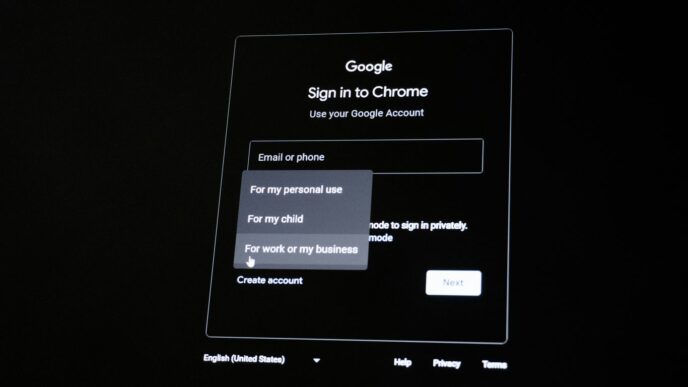Artificial intelligence, or AI, is really changing how healthcare works. It can help doctors diagnose problems, manage patient information, and even make office tasks smoother. But with all these new tools, there are also new rules and concerns about how to use them safely and fairly. Keeping up with ai regulation in healthcare is becoming super important for everyone in the medical field.
Key Takeaways
- Healthcare groups need to stay current with government updates on AI, like those from HHS, and be ready to adjust their plans.
- The FDA plays a big role in checking AI medical devices, and recent court rulings might change how agencies are viewed, potentially leading to more scrutiny.
- It’s important to make sure AI tools are fair and don’t have biases that could affect patient care differently for various groups.
- Healthcare providers should actively check AI vendors and set up their own systems to manage and watch how AI is used within their practice.
- With different states having their own rules about health data, organizations operating in multiple states need to be extra careful to follow all applicable laws.
Understanding the Current AI Regulatory Landscape in Healthcare
Artificial intelligence is really starting to show up everywhere in healthcare, and it’s pretty exciting. Think about how it can help doctors figure out what’s wrong with patients faster, or how it might make all that paperwork a bit less of a headache. But, and this is a big but, the rules and laws around using AI in medicine are still pretty new and are changing all the time. It means folks working in healthcare, from the front desk to the folks making big decisions, really need to keep up.
HIPAA Compliance for AI-Driven Healthcare
So, the big one is HIPAA, right? The Health Insurance Portability and Accountability Act. It’s all about keeping patient information private and safe. Any AI tool that touches patient data, whether it’s helping answer phones or analyzing scans, has to play by HIPAA’s strict rules. This means making sure that data is locked down and only shared when it’s supposed to be. It’s not just about the big AI systems; even AI used in everyday office tasks needs to be compliant. We have to be really careful about how patient data is handled to avoid any trouble.
Emerging Federal Oversight and Task Forces
On the federal side, things are moving. The Department of Health and Human Services (HHS) has put together an AI Task Force. Their job is to keep an eye on how AI is being used in healthcare and make sure it’s being used fairly and safely. They’re working on new rules, and some of these are expected to be ready by 2025. Healthcare organizations will need to pay close attention to these as they come out. It’s a sign that the government is taking AI in healthcare seriously and wants to set clear guidelines. The AMA survey shows physicians are open to AI, but responsible development is key to trust [8458].
NIST Risk Management Framework for AI
Then there’s the National Institute of Standards and Technology, or NIST. They put out a Risk Management Framework specifically for AI back in 2023. Think of it as a guide, giving healthcare providers a way to spot and then deal with the risks that come with using AI. It’s about finding those weak spots in AI systems before they cause problems. Following this framework can help manage the uncertainties that come with new technology.
Here are some key steps from the NIST framework:
- Identify AI Risks: Figure out what could go wrong with the AI system.
- Assess AI Risks: Understand how likely those problems are and how bad they could be.
- Manage AI Risks: Put plans in place to reduce or get rid of those risks.
- Govern AI Risks: Keep an eye on things and make sure the plans are working over time.
Navigating Federal Regulations and Agency Authority
When we talk about AI in healthcare, figuring out who’s in charge of what is a big deal. The US government uses existing laws, but there’s a push for more specific rules and even a dedicated agency for AI. It’s a bit of a moving target right now.
FDA’s Role in Regulating AI Medical Devices
The Food and Drug Administration (FDA) has a lot on its plate when it comes to medical devices, and AI is no exception. They use the Federal Food, Drug, and Cosmetic Act (FDCA), which has been around since 1938 and updated many times. Think of it like this: the FDA has to approve certain medical products before they can hit the market. For AI-driven tools, this often means going through pathways like premarket notification (510(k)) or premarket approval (PMA). The tricky part is that AI can be pretty dynamic, and the current laws weren’t exactly written with machine learning in mind. This means the FDA sometimes has to get creative with how it applies existing rules, and it can’t just create entirely new approval processes on its own. They often put out guidance documents to explain their current thinking, which aren’t legally binding but give a good idea of what manufacturers should be doing. It’s a way for them to keep up with fast-moving tech without going through the full, slower process of creating new regulations.
Impact of Supreme Court Decisions on Agency Deference
Lately, the Supreme Court has made some big decisions that could shake things up for federal agencies, including the FDA. One key concept that’s been central to how agencies operate is called
Addressing Ethical Considerations and Bias in Healthcare AI

When we talk about AI in healthcare, it’s not just about the cool tech or how it can speed things up. We also have to think about the fairness and the potential for bias. It’s a big deal because if AI systems aren’t built right, they can actually make health inequalities worse. Think about it – if the data used to train an AI doesn’t represent everyone, the AI might not work as well for certain groups of people. This is something we really need to pay attention to.
Ensuring Fairness and Mitigating Algorithmic Bias
So, how do we make sure AI is fair? A big part of it is looking at the data that trains these systems. If the data is skewed, the AI will be too. For example, an AI trained mostly on data from men might not be as accurate when used for women. This can lead to different treatment recommendations, which is obviously not good. To combat this, healthcare providers should ask AI companies for details on their fairness checks. It’s also a good idea to do what they call "red teaming." This means actively trying to find problems with the AI by testing it with all sorts of different patient scenarios and data. The main goal here is to make sure the AI works well and treats everyone equally. We can’t just set it and forget it, either; we need to keep an eye on how the AI is performing over time to catch any new issues.
Transparency and Accountability in AI Decision-Making
Another tricky area is knowing how AI makes its decisions. If a doctor or a patient doesn’t understand why an AI suggested a certain course of action, it’s hard to trust it. Healthcare groups need to push for AI systems that can explain their reasoning. This helps avoid situations where staff are just following AI advice without really knowing the basis for it. And what happens if the AI makes a mistake? It’s not always clear who’s responsible – the developer, the hospital, or the doctor who used it? Having clear plans in place for when AI errors occur is really important. This is where having a solid AI governance framework comes in handy, setting up who handles what when things go wrong.
Informed Consent and Data Ownership in AI Applications
AI systems often need a lot of patient data to work. This brings up big questions about privacy and who actually owns that data. Laws like HIPAA are there to keep health information safe, but AI sometimes needs data for training or research in ways that go beyond regular patient care. This can make getting proper consent and figuring out data ownership pretty complicated. We need to think about how we get patients’ OK when their data is used for these extra purposes. It’s about making sure patients understand what’s happening with their information and have a say in it. Plus, with AI systems handling so much sensitive information, data security is a huge concern. We need strong rules to stop hackers from getting into these systems.
Proactive Strategies for AI Compliance in Healthcare
Staying ahead of the curve with AI in healthcare means being smart about how you handle rules and keep things safe. It’s not just about following the law today, but also getting ready for what’s next. This means making sure your team knows what’s going on with AI rules and picking the right partners to work with.
Continuous Education on Evolving AI Regulations
Laws and guidance around AI in healthcare are changing pretty fast. It’s important for everyone involved, from doctors to IT staff, to keep learning. This includes paying attention to updates from places like HHS and being ready to adjust how you do things. Think of it like keeping up with new medical research; you can’t afford to fall behind. Staying informed helps you avoid problems and use AI in a way that’s safe and effective for patients. It’s a good idea to get legal advice from people who know healthcare AI laws well, so you can understand all the new stuff coming out. This helps you build rules and teams that focus on using AI safely and legally.
Vendor Due Diligence for AI Tools
When you bring in AI tools, you need to be sure they’re trustworthy. This means looking closely at the companies that make them. Ask them about how they built their AI and how they tested it. It’s also smart to ask for reports that show if their AI is fair and doesn’t have biases. You might even want to do your own tests, sometimes called "red teaming," where you try to find flaws or weak spots in the AI by giving it tricky situations. This helps make sure the AI works well for everyone, no matter their background. Picking vendors who are open about their AI and have things like HITRUST certification can make a big difference. Remember, AI in healthcare presents significant compliance challenges, so choosing the right partners is key.
Implementing Robust AI Governance and Monitoring
Once you have AI systems in place, you can’t just forget about them. You need a solid plan for how they’re used and how you’ll keep an eye on them. This means setting up clear rules for using AI, maybe even a special committee to oversee it. It’s also really important to keep checking how the AI is performing over time. Are there any mistakes creeping in? Is it still fair to all patients? You need systems to catch problems early and fix them. Even with AI helping out, humans should still make the final calls on patient care. AI should be a tool to help doctors, not replace them. Regular checks, like looking at accuracy metrics and doing those "red teaming" tests we talked about, are a good way to make sure the AI is doing what it’s supposed to and not causing harm.
State-Level Variations in AI Healthcare Laws
It feels like every state is trying to do its own thing when it comes to AI and healthcare. This makes things pretty complicated for providers, especially if they operate in multiple places. You really have to keep track of what each state is doing, or you could run into trouble.
Some states have privacy laws that specifically mention health data, which is a big deal for AI. Think about California with its Consumer Privacy Act (CCPA) or Washington with its My Health My Data Act. These laws can have some serious consequences if you don’t follow them, partly because they give people the right to sue if their data isn’t handled right. It’s not just about federal rules anymore; you’ve got to be aware of these state-specific requirements.
These state laws often ask for a few key things:
- Keeping patient data safe with reasonable security measures.
- Being upfront about how data is used.
- Getting permission from patients before collecting or using their health information, often with options to say no.
- Letting people see and delete their data.
- Putting limits on selling or using data in ways people didn’t agree to.
This can get tricky with AI. For example, if a patient agrees to let their health information be used for their care, that doesn’t automatically mean it can be used to train an AI model. And if they later ask for their data to be returned or deleted, that’s a tough ask if it’s already part of an AI’s training set. It’s a real headache to sort out.
Key State Privacy Laws Affecting Health Data
Several states have put their own spin on privacy, and some of these laws directly impact how health data can be used, especially with AI. California’s CCPA, for instance, gives consumers rights over their personal information, including health data. Washington’s My Health My Data Act is even more specific, focusing on "consumer health data" and requiring explicit consent for its collection and sharing. Other states like Connecticut and Nevada have also passed laws that add layers of protection for health information. These laws often include:
- Consent Requirements: Many states require opt-in consent for collecting sensitive health data, which can be more restrictive than federal HIPAA rules.
- Data Subject Rights: Consumers can typically request access to their data, ask for corrections, and demand deletion.
- Data Sale Restrictions: There are often strict rules against selling health data without explicit permission.
Navigating Multi-State Compliance Challenges
Trying to follow all these different state laws can feel like a maze. If your healthcare organization works across state lines, you’re likely dealing with a patchwork of regulations. What’s allowed in one state might be restricted in another. This means you can’t just have one standard approach; you need to tailor your AI data practices to meet the strictest requirements across all the states you operate in. It requires a really detailed understanding of each state’s specific rules regarding health data privacy and AI usage. Keeping up with these changes is a constant job, and it often means working closely with legal and compliance teams to make sure you’re not missing anything important.
Evaluating AI Accuracy and Performance in Clinical Settings
So, we’ve talked a lot about the rules and the ethics of AI in healthcare, but what about whether it actually works? That’s where evaluating accuracy and performance comes in. It’s not enough for an AI tool to be compliant and fair; it has to be good at its job, too.
Complementing Clinical Judgment with AI
First off, let’s get this straight: AI in healthcare isn’t meant to replace doctors or nurses. Think of it more like a really smart assistant. It can crunch numbers, spot patterns, and flag things that might be easy to miss, but the final call? That still rests with the human expert. This means that even when an AI suggests a diagnosis or treatment, a clinician needs to review it. It’s about adding another layer of insight, not outsourcing critical thinking. We need to make sure these tools are helping, not hindering, the people who are directly caring for patients.
Assessing AI Performance Metrics and Validation Studies
How do we know if an AI tool is actually any good? We look at the numbers. There are specific ways to measure how well an AI performs, and these are pretty important. You’ll often hear about things like:
- Sensitivity: This tells you how good the AI is at correctly identifying patients who do have a specific condition. A high sensitivity means it catches most of the true cases.
- Specificity: This is the flip side – how good the AI is at correctly identifying patients who don’t have the condition. High specificity means it doesn’t wrongly flag healthy patients.
- Predictive Value (Positive and Negative): These metrics look at the probability that a positive or negative AI result actually reflects the true status of the patient. It helps understand the real-world likelihood of a correct diagnosis based on the AI’s output.
Beyond these individual metrics, it’s also vital to look at validation studies. These are the research papers and trials that test the AI in real or simulated clinical settings. They should show how the AI performed with patient groups similar to those you’ll be using it with. If a study shows an AI works well for detecting diabetic retinopathy in one population, that’s great, but you still need to be sure it’ll do the same for your specific patient mix. It’s about making sure the AI’s performance isn’t just a fluke in a lab setting but holds up in the messy reality of patient care.
Looking Ahead: Staying Compliant in the AI Era
So, AI in healthcare is a big deal, and the rules around it are still being written. It’s not like flipping a switch; it’s more like a constant learning process. Healthcare groups really need to keep up with what the government is saying, like from HHS and the FDA, and be ready to change how they do things. This means training staff, checking AI tools for fairness, and making sure patient data stays safe, all while following rules like HIPAA. It’s a lot to manage, but staying informed and adaptable is the best way to use AI safely and effectively for better patient care.
Frequently Asked Questions
What’s HIPAA, and why is it a big deal for AI in healthcare?
Think of HIPAA like a rulebook for keeping patient health information private and safe. Any AI tool that uses this kind of info must follow these rules very carefully. It’s all about making sure patient details aren’t shared without permission and are protected from hackers.
How does using AI affect patient privacy?
AI needs a lot of information to learn and work. This means using patient data. So, we have to be super careful about how that data is gathered, stored, and used. If someone’s private health info gets out, it’s a big problem and can lead to serious legal trouble.
What’s the deal with fairness and bias in healthcare AI?
It’s important to make sure AI tools are fair and don’t favor certain groups of people over others. Sometimes, AI can be less accurate for certain patients because the data it learned from didn’t include enough people like them. We need to check for and fix these unfair biases.
Why do we need AI to be clear and accountable in healthcare?
When AI makes a decision, like suggesting a diagnosis, it’s important that doctors and patients can understand how it got there. We also need to know who is responsible if the AI makes a mistake. It’s about being open and accountable.
How can healthcare places keep up with changing AI rules?
Healthcare groups need to constantly learn about new AI rules and updates. This means reading government guidance, talking to experts, and training staff. It’s like staying updated with the latest tech news, but for important health laws.
Should AI replace doctors, or just help them?
AI should help doctors, not replace them. Doctors should always use their own judgment and review what the AI suggests. We also need to check how well the AI works in real situations and make sure it’s accurate and reliable for patients.














